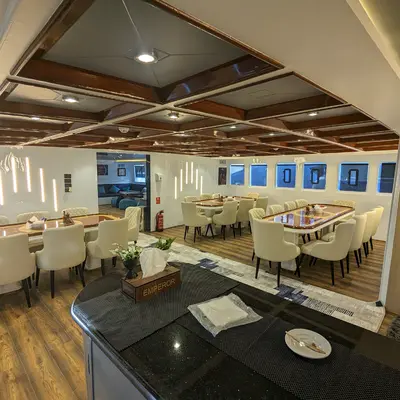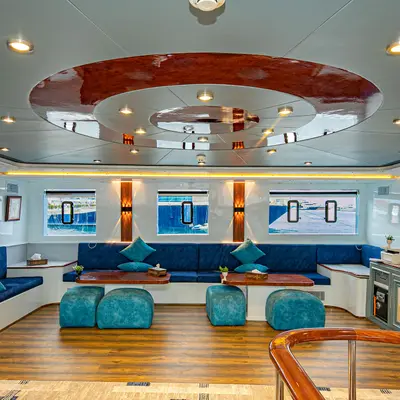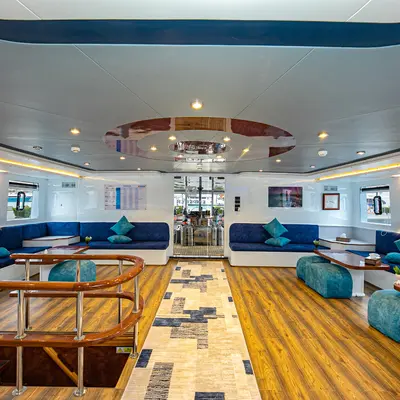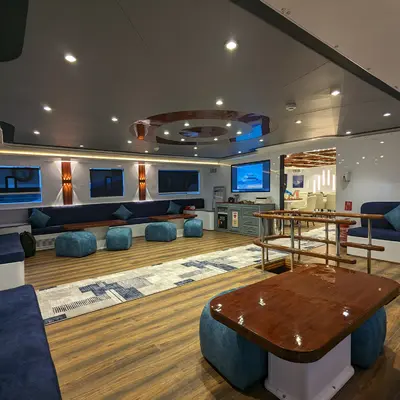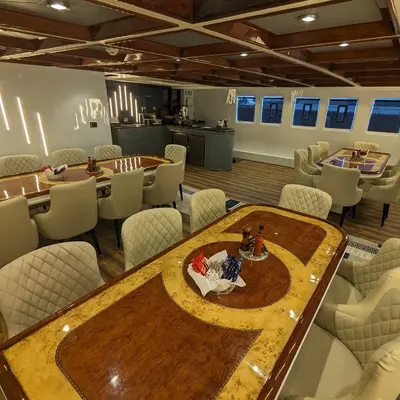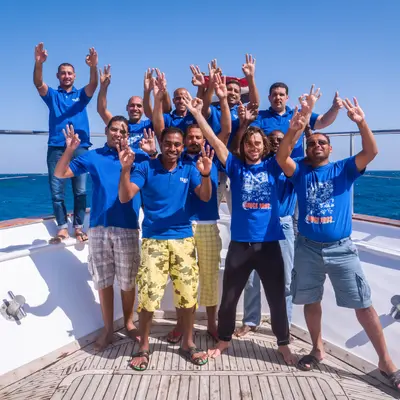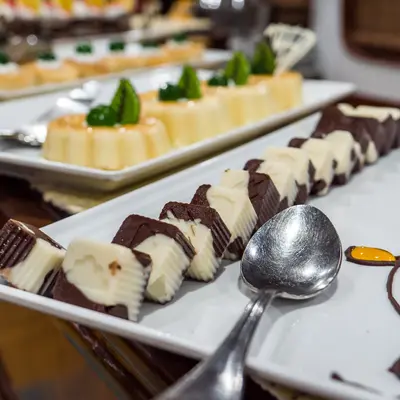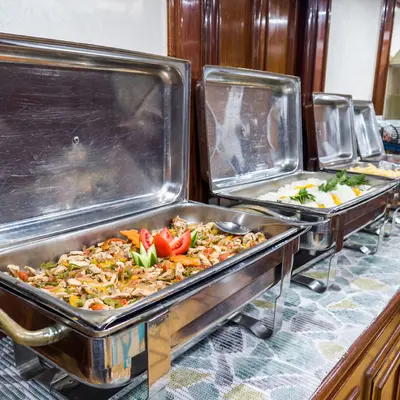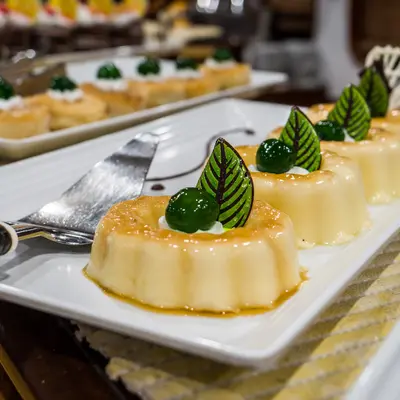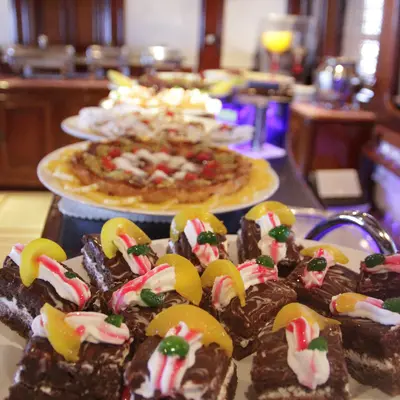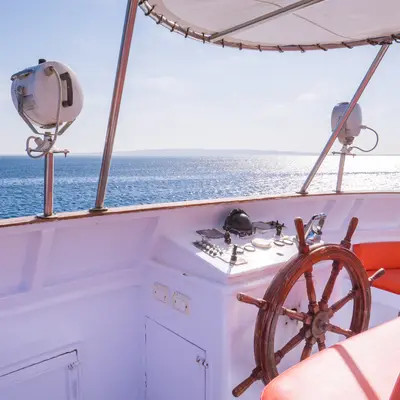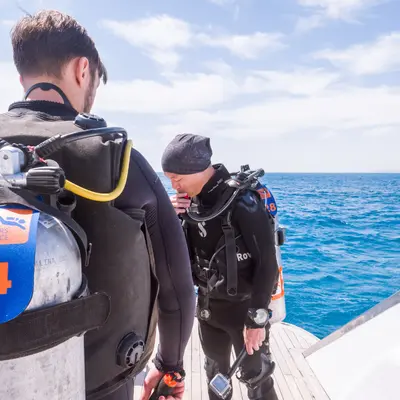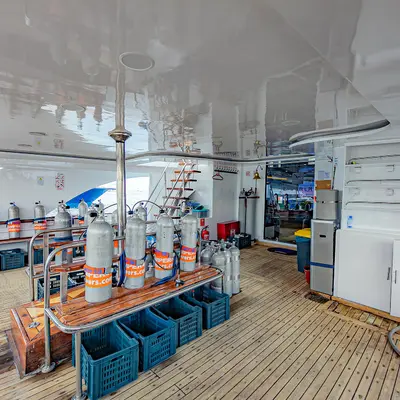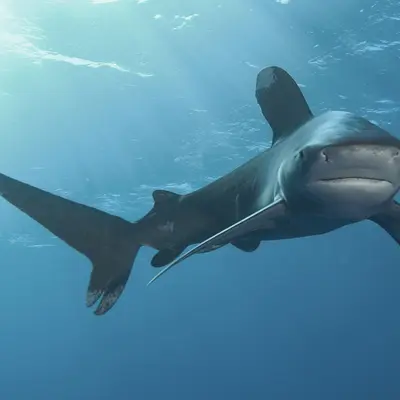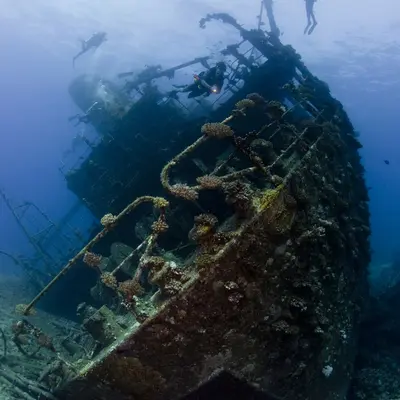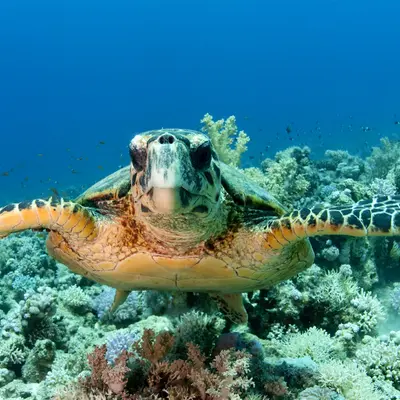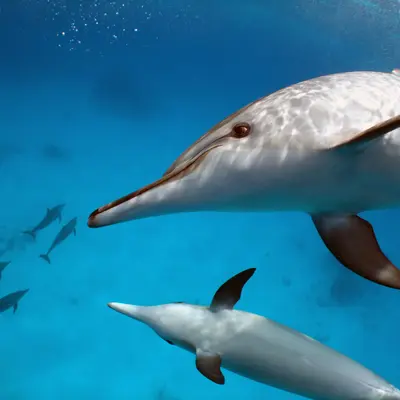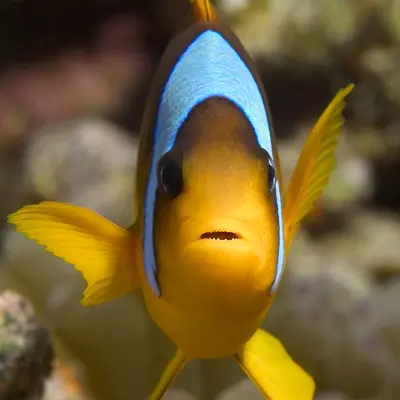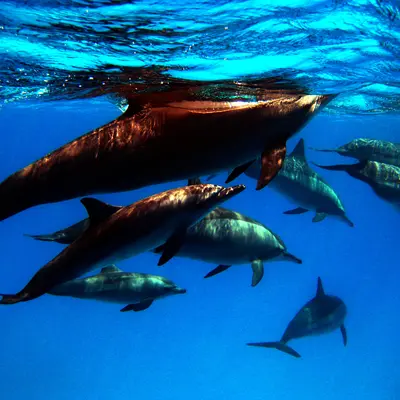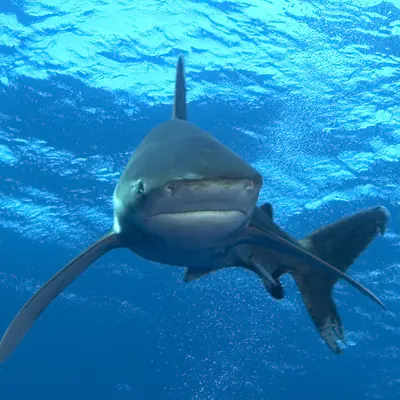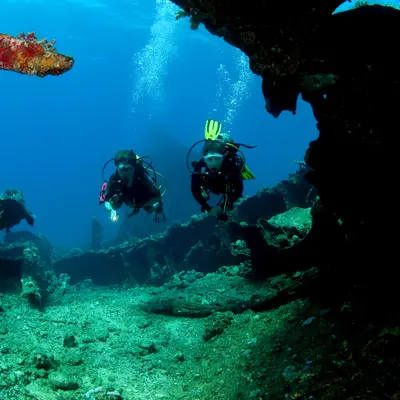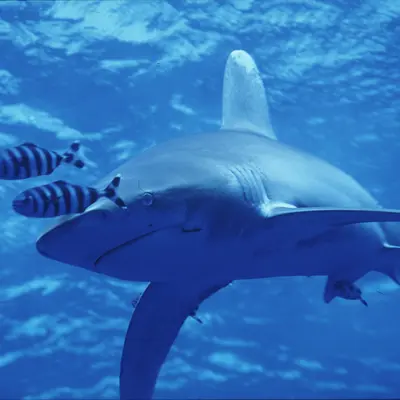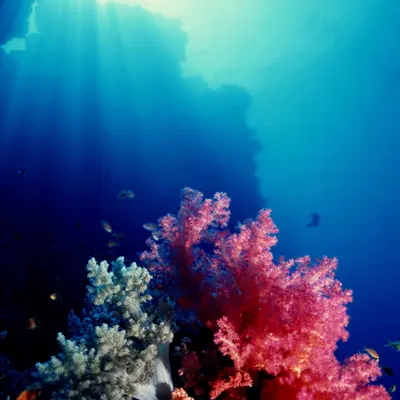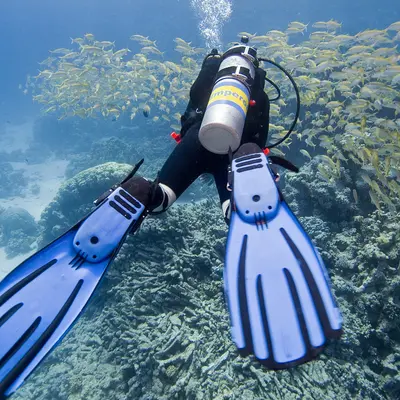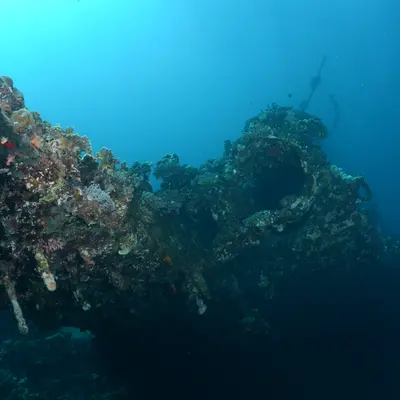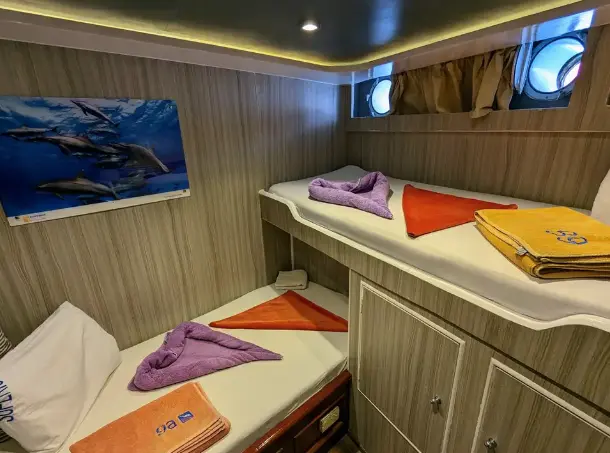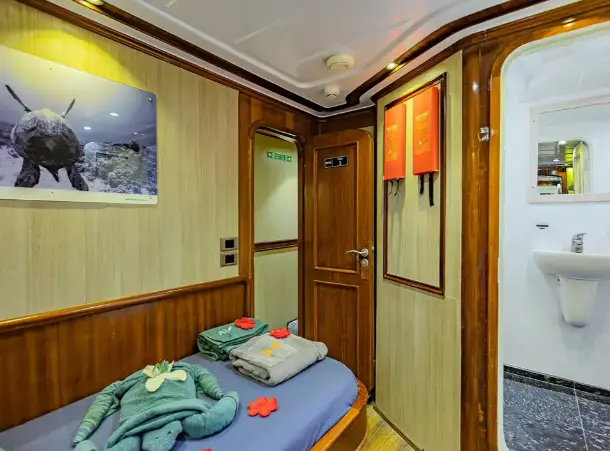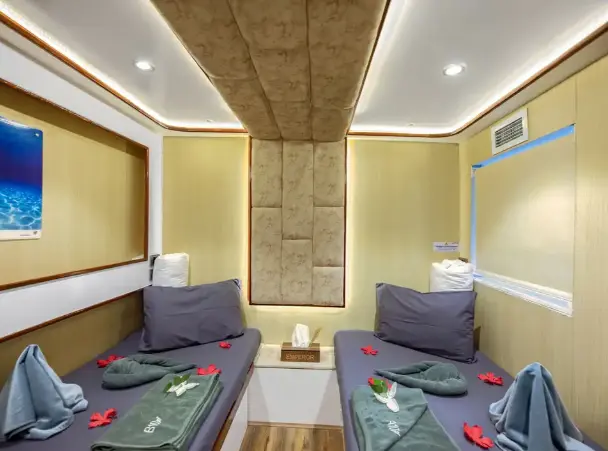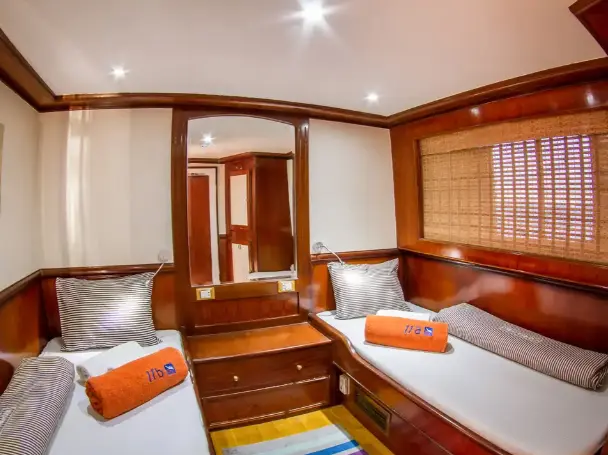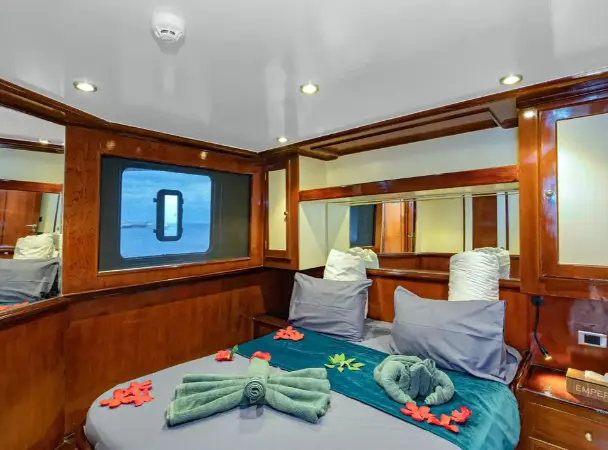Dive the top spots of the Red Sea with the Emperor Superior
The week-long itineraries with the Emperor Superior usually include more than 21 dives - a real highlight for those who want to get the most out of their safari. The ship is perfectly tailored to the needs of underwater photographers: with special work areas for setting up and loading camera equipment, rinsing tanks and well-designed dive decks with personal equipment storage.
Two fast dinghies provide easy access to the best diving spots in the region.
This website uses Google Maps to embed map material. Please note that your personal data may be collected in the process. To view the Google Maps map, please agree that it is loaded from the Google server.
The Emperor Superior is a custom-built liveaboard, specially designed by divers for divers and part of the renowned Emperor fleet. It operates all year round in the Egyptian Red Sea and offers first-class conditions for underwater photographers and ambitious divers.
Up to 26 guests can be accommodated on board in 13 cabins, which are available in four different categories. All cabins are equipped with en-suite bathrooms, individually adjustable air conditioning, storage space and two towels per person - for a comfortable experience on board.
Freshly prepared meals with regional and international influences are served daily in the air-conditioned saloon with integrated entertainment system and in the spacious dining room. There is also an outdoor lounge on the main deck, which is ideal for relaxing with a drink after diving or watching dolphins. Two spacious sun decks with loungers invite you to relax between dives.
As with all safaris in the Emperor fleet, nitrox (for certified divers), WiFi on board and red wine with dinner are already included in the cruise price. Also included are all harbour fees, parking and environmental taxes as well as fuel costs - there are no hidden additional costs. What is booked is what is paid for - transparent, high-quality and reliable.
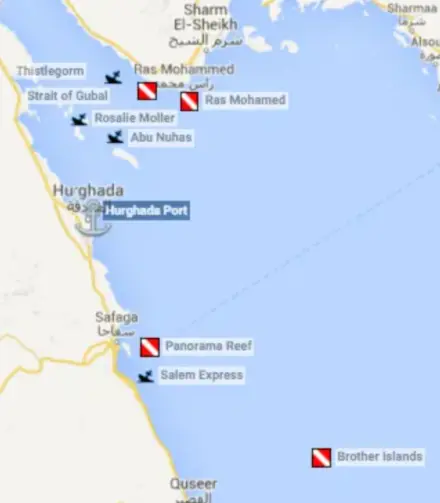
From Hurghada we sail north towards Gubal Island and on to Abu Nuhas and its four famous wrecks: Giannis D, Carnatic, the Lentil Wreck and the Tile Wreck, all of which offer spectacular dives and plenty of fish life. Explore the Rosalie Möller (the sister ship of the more famous Thistlegorm), which lies between 30 and 50 metres deep and is in excellent condition. Although visibility is not always good, the wreck is covered with glassfish from bow to stern and there are masses of lionfish on the hunt. Around the wreck are the usual pelagic fish such as tuna, mackerel, angelfish and many more.
A short drive across the Strait of Gubal and you will visit the most famous wreck of the Red Sea, the SS Thistlegorm! An impressive British ship from the Second World War with a cargo full of weapons, Bedford lorries and BSA motorbikes, all destined for the British troops in North Africa. It was sunk by the German Luftwaffe and now lies in 30 metres of water. Depending on the experience of the divers, together with the weather and current conditions, we try to offer a night dive here. Nearby is the Ras Mohamed National Park, which offers a morning dive on the famous \"Shark and Yolanda\" reefs. Ras Mohamed National Park is the furthest destination in the Sinai before heading south to the Brothers.
TheBrothers Islands are the peaks of two undersea mountains that rise from the depths of the abyss and lie about 60 miles off the coast of El Quseir. These islands are part of the Marine Park Islands National Park and offer stunning wall diving, with the walls covered in soft corals and gorgonian forests creating a kaleidoscope of ever-changing colours. They attract a variety of marine life and large pelagic species. Large tuna, barracuda, mackerel and snapper cruise the blue, accompanied by the occasional hammerhead shark, silky and oceanic whitetip sharks and manta rays. Even the rare thresher shark can sometimes be found there. Sightings of the grey reef shark are almost guaranteed on the north and south plateau of Small Brother.
For the wreck diver, the Aida II, an Egyptian supply ship, and the Numidia, a cargo ship, lie against the walls of Big Brother. Both are covered with a rich growth of soft and hard corals. Marine life includes a family of Napoleon wrasse and grey reef sharks.
The boat then sails back to Hurghada via Safaga, where you can dive at Panorama Reef or the famous wreck of the Salem Express for an unforgettable finale!
Check-out begins early in the morning on the day of disembarkation, with all guests departing by midday.
Marine life: Large tuna, barracuda, mackerel and snapper cruise in the blue, accompanied by the occasional hammerhead shark, silky and oceanic whitetip sharks, manta rays, thresher sharks
The last dive takes place on the penultimate day of the trip. Divers are advised to wait 24 hours after the last dive before flying.
Sample itineraries and maps are for illustrative purposes only. The exact route and sites visited may change depending on local regulations, guest experience, weather and logistics and are at the captain's discretion.
Double cabin bunk beds lower deck
- 2 single beds
- En-suite bathroom
- adjustable air conditioning
- max. 2 guests
Double cabin twin lower deck
- 2 single beds
- En-suite bathroom
- adjustable air conditioning
- max. 2 guests
Double cabin main deck
- 2 single beds
- En-suite bathroom
- adjustable air conditioning
- max. 2 guests
Double cabin upper deck
- 2 single beds
- En-suite bathroom
- adjustable air conditioning
- max. 2 guests
Double cabin upper deck
- 1 double bed
- En-suite bathroom
- adjustable air conditioning
- max. 2 guests
Included: VAT, harbour fees, national park fees, fuel surcharge, hotel transfers, soft drinks, tea & coffee, drinking water, wine with dinner, special dinner, snacks, full board (all meals), nitrox, dive packages, towels for use on deck, cabin towels, WiFi.
Optional extras: travel insurance, diving insurance (7 EUR), tips (75 EUR), airport transfer (12-58 EUR per activity), alcoholic drinks (3.50 EUR), rental equipment, Nitrox course (160 EUR), private dive guide (599 EUR), diving courses (69-250 EUR).
Prices for rental equipment
Rental equipment is available on this ship. Please indicate what you need on the booking form. Details below of what is included and the additional prices.
- 15 litre bottles 35-46 EUR
- Breathing regulator 83 EUR
- BCD83 EUR
- Fins 21 EUR
- Mask 14 EUR
- Nitrox bottle included
- Signal buoy14 EUR
- Torch 48 EUR
- Dive computer 14 EUR
- Complete equipment (with: regulator, BCD, fins, mask, signal buoy, dive computer, wetsuit) 206 EUR
- Wetsuit 55-83 EUR
- Air temperature: Warm all year round with average temperatures between 24.1 °C in January and 35.6 °C in August.
- Water temperature: Stable temperatures between 22 °C in February/March and 29 °C in August, ideal for diving.
- Rainfall: Very dry climate with minimal rainfall, mainly in October and November.
Egypt is located in north-east Africa and connects Africa with Asia via the Sinai Peninsula. The Red Sea stretches along the east coast of Egypt and is an important maritime region with rich marine life, clear waters and unique coral reefs.
Population & Religion
Egypt has over 100 million inhabitants, the vast majority of whom are Muslim (mostly Sunni). There are also small Christian minorities, mainly Copts. Religion plays a central role in social life.
Economic factors & tourism
Tourism is a mainstay of the Egyptian economy. In addition to cultural highlights such as the pyramids and temples, diving tourism on the Red Sea is an important economic factor, especially in regions such as Hurghada, Marsa Alam, Sharm El-Sheikh and Dahab. Diving and beach tourism creates numerous jobs in the hotel industry, catering, travel agencies and as diving guides.
Importance of diving in the Red Sea
The Red Sea is considered one of the most biodiverse seas in the world. It is known for:
- Coral reefs in excellent condition
- Year-round diving conditions due to warm water temperatures
- Diversity of marine life such as dolphins, sharks, turtles, moray eels and colourful reef fish
- Spectacular wrecks, e.g. the SS Thistlegorm
- Good underwatervisibility of up to 40 metres
These conditions make Egypt one of the world's favourite destinations for beginners and experienced divers alike.
Conclusion
Diving in the Red Sea is of great economic and ecological importance for Egypt. Not only does it contribute to regional development, but it also helps to raise awareness for the protection of marine ecosystems. Combined with cultural treasures, Egypt is a unique destination for recreation, adventure and nature experiences.

